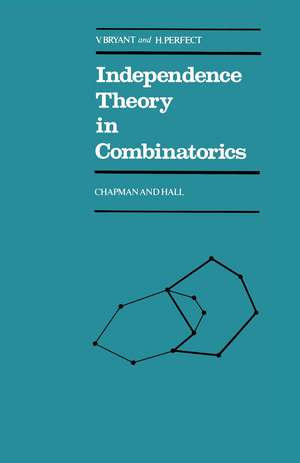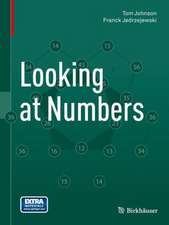Independence Theory in Combinatorics: An Introductory Account with Applications to Graphs and Transversals
Autor V. Bryanten Limba Engleză Paperback – 2 oct 1980
Preț: 378.54 lei
Nou
Puncte Express: 568
Preț estimativ în valută:
72.44€ • 75.35$ • 59.81£
72.44€ • 75.35$ • 59.81£
Carte tipărită la comandă
Livrare economică 12-26 aprilie
Preluare comenzi: 021 569.72.76
Specificații
ISBN-13: 9780412224300
ISBN-10: 0412224305
Pagini: 144
Ilustrații: XII, 144 p.
Dimensiuni: 140 x 216 x 9 mm
Greutate: 0.19 kg
Editura: SPRINGER NETHERLANDS
Colecția Springer
Locul publicării:Dordrecht, Netherlands
ISBN-10: 0412224305
Pagini: 144
Ilustrații: XII, 144 p.
Dimensiuni: 140 x 216 x 9 mm
Greutate: 0.19 kg
Editura: SPRINGER NETHERLANDS
Colecția Springer
Locul publicării:Dordrecht, Netherlands
Public țintă
ResearchCuprins
1 Preliminaries.- 1.1 General introductory and historical remarks.- 1.2 Sets, families and graphs.- 1.3 Vector spaces; linear and affine independence.- Exercises.- 2 Independence spaces.- 2.1 Axioms and some basic theorems.- 2.2 Some induced structures.- 2.3 Submodular functions.- 2.4 Sums of independence structures.- Exercises.- 3 Graphic spaces.- 3.1 The cycle and cutset structures of a graph.- 3.2 Connections with vector spaces.- 3.3 Applications of independence theory to graphs.- Exercises.- 4 Transversal spaces.- 4.1 Hall’s theorem and its generalization.- 4.2 The partial transversals of a family of sets.- 4.3 Duals of transversal structures.- 4.4 Extensions of Hall’s theorem.- 4.5 Applications.- Exercises.- 5 Appendix on representability.- 5.1 Representability in general.- 5.2 Linear representability.- 5.3 Induced structures.- 5.4 Linear representability over specified fields.- 5.5 Some spaces which are not linearly representable.- Exercises.- Hints and solutions to the exercises.- Further reading.















